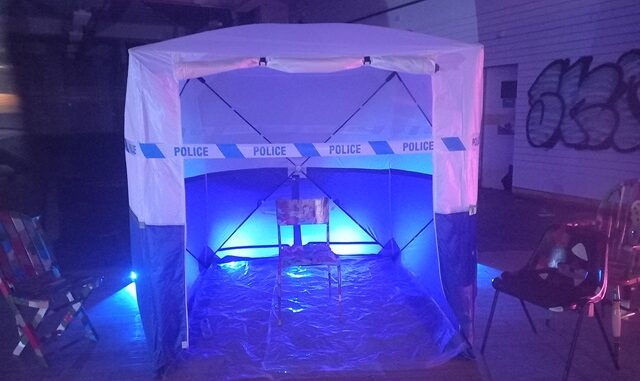
An installation in the window of the former Primark store in Margate aims to highlight the plight of homeless people dying on the streets.
Consider has been created by Phien O’Phien from Margate who has previously exhibited at Tate Modern with art delving into the issues of those who are disenfranchised.
The installation is comprised of discarded chairs, painted, to represent people living rough and a forensic police tent as the final shelter for many of those who are homeless.
Consider can be seen inside the seaside entrance of the former Primark store alongside the shelter where some of the isle’s homeless sleep.
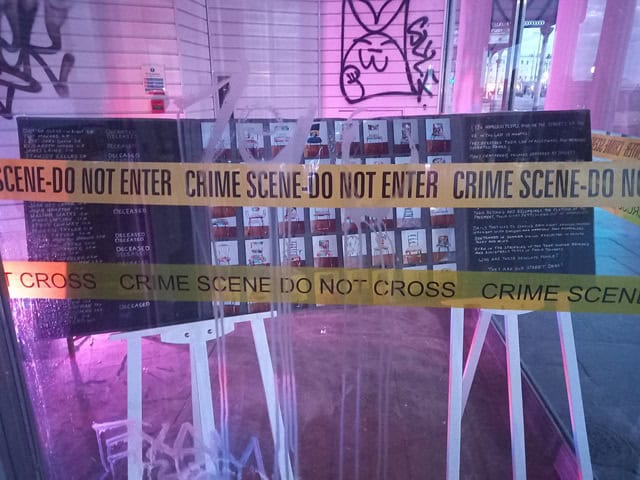
The installation, which also has a booklet and postcards, is later being shown in the Model gallery in Ireland on July 6. It was first displayed at The Margate School in 2020.
The father-of-four, who is self-taught and well-known as a campaigner for the Pavee community and against discrimination based on race, sexuality or disability, said: “The installation Consider was brought into being when, one summer day, I witnessed a homeless man lying dead on a seaside bench. He must have just been discovered, as there was no police tape or forensic tent around him.
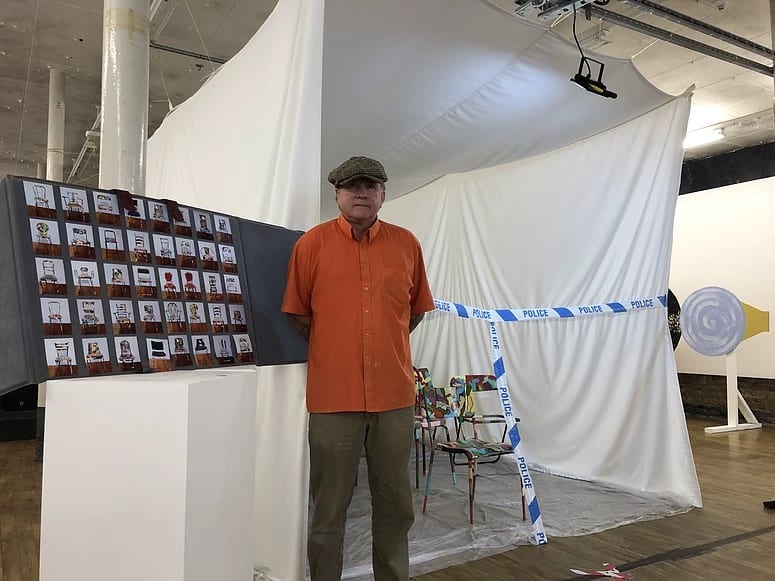
“Two benches from his blanket-covered body sat a lady with a child in a pram eating fish and chips. It struck and shocked me that society had become so blasé about homeless people that they could ignore them, living and dead.
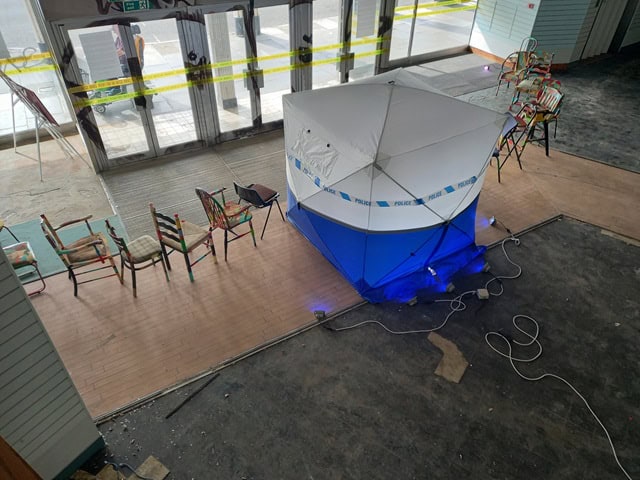
“That autumn, while driving home on a wet, foggy night, I saw what I thought was a homeless person squatting beside an alleyway wall. I initially passed by, but braked and went back to offer whatever help I could. Upon approaching the homeless person, I found it was a weather-worn chair.
“Pondering this later at home, I realised all homes have chairs until they are no longer wanted, and then they are disposed of. Many end up on the streets, just like discarded people do.
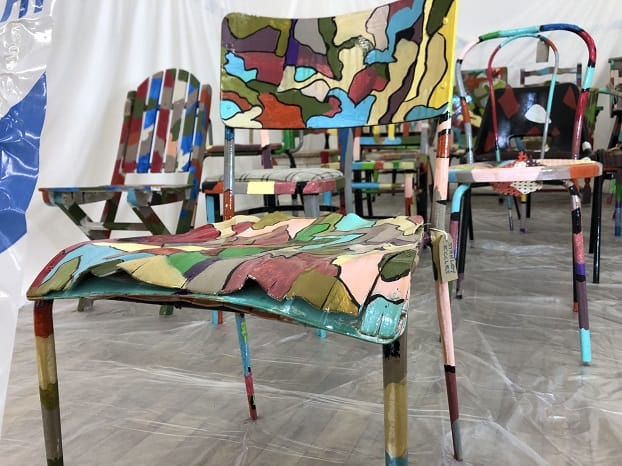
“I went back the next day and rescued the chair, and for the following few months I sought out abandoned chairs, and symbolically, for me and the installation, they became people. I found my “people” dumped on the streets, in alleyways, gardens, and fly-tipped in lanes.
“I painted the chairs various colours to represent commonplace human emotions, but also the different emotions and traumas particular to homeless people. I gave them names and backstories, hoping to consciously tweak people’s consciences to consider homeless people as fellow humans in great need of help and not just some sort of abstract street furniture.
“Sadly and disturbingly, the last roof some homeless have over their heads is a police forensic tent, and so I place these society victims in and around their last shelter.”
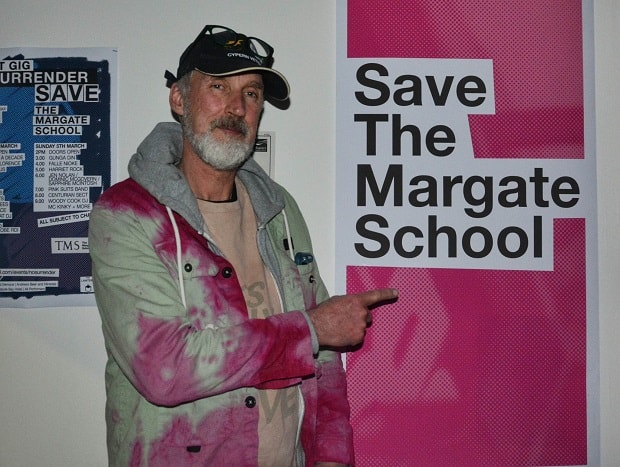
Uwe Derksen the director of the Margate School Gallery, said: “Phien explained to me that he’d developed a concept for an exhibition and thought the space we had in Margate High Street, possibly one of the most challenging high streets in the country, was the right space for the work he had in mind.
“Phien explained that it would be an exhibition comprising chairs abandoned on the streets, a police forensic tent, photos, and individual stories of homeless people who had passed away.
“Each chair would symbolically represent one homeless person. I was not sure what to expect from Phien’s exhibition, but the result had a profound impact on me and the many visitors who came to see the exhibition Consider in October 2020.
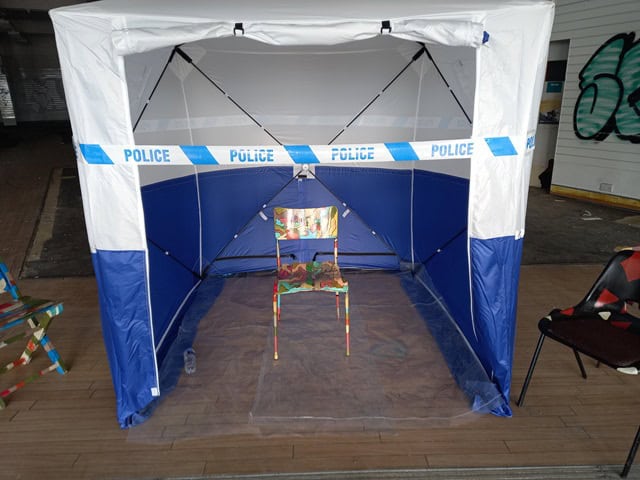
“The display of the chairs, colourfully painted to symbolise stress, trauma, emotions, stood within and outside the forensic tent—those outside waiting their turn to enter the tent—powerfully demonstrating the revolt and making a stand against our indifference to the plight of this vulnerable group in society: the homeless.
“I view it as a very significant piece of artwork that will hopefully get the national and international recognition it deserves. Anyone who sees the exhibition will not remain untouched.”
Homeless people and deaths on our streets
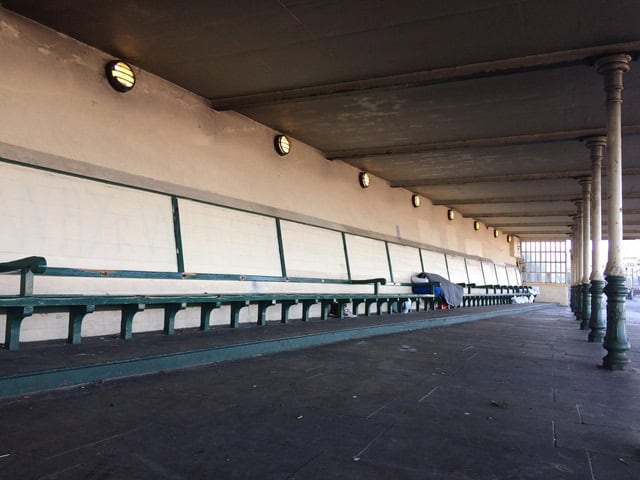
In 2021 (most recent data published) there were three identified deaths of homeless people in Thanet with five deaths estimated. Estimates, meaning those who died on the street but may not have been registered as homeless.
The previous year also saw three identified deaths and four estimated.
From 2013-2022 it is estimated 22 homeless people in Thanet dies with identified deaths listed as 18.
New data was due to be published in November 2023 but in January the Office for National Statistics (ONS) launched a consultation on axing the statistics over accuracy concerns.
Early analysis of the consultation resulted in a U-turn on those plans and the ONS will now make “iterative” changes to improve accuracy of the statistics. More detail is expected to be announced in a full response to the consultation in May.
According to research by the Museum of Homelessness 1313 people across the country died while homeless in 2022, an 85% increase on the numbers recorded by the study in 2019.
An annual survey for people sleeping rough in local authority areas between October 1st and November 30th in 2023 shows 23 people identified as sleeping on the street in Thanet. This data is, however, only a snapshot.
The data published by Kent County Council says the majority of rough sleepers in Kent were aged 26 and over.
In April this year annual funding from Kent County Council for homelessness charity Porchlight was cut by £1m, putting the future of the organisations hostels at risk. It also forced Porchlight to scale back other work such as homelessness prevention and supporting people via the helpline.
In the wake of the funding cut, more than 600 people made donations, buying extra time to continue the fight for long-term funding.

